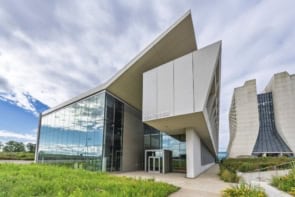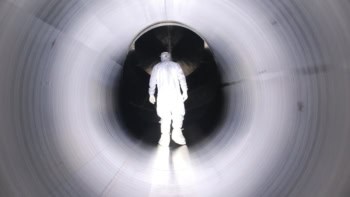Physicists in China and the US have proposed a way of using a mixture of ultracold atoms to study supersymmetry — a concept usually associated with particle physics.
The team has calculated that a “Goldstino-like” excitation should occur in mixtures of bosons and fermions as a result of supersymmetry breaking. While the researchers admit that it not currently possible to detect the excitation, they believe that advances in ultracold-atom experiments could make it possible to study supersymmetry in atomic mixtures. This, they claim, could lead to a better understanding of the fundamental properties of sub-atomic particles.
Superpartners for all
All known sub-atomic particles are either fermions (having half-integer values of spin) or bosons (having integer values). For some reason there seems to be more types of fermion in the universe than types of boson. This doesn’t sit well with some physicists who believe that the universe should posses supersymmetry, in which every fermion has a corresponding “superpartner” that is a boson — and vice versa. One attractive consequence of supersymmetry is that it could help unify the electroweak and strong forces of nature into one “electrostrong” force — something that physicists have been struggling to do for decades.
While physicists have never actually seen a superpartner, some are hopeful that they could reveal themselves at the high collision energies that will soon be possible at CERN’s Large Hadron Collider.
Breaking supersymmetry
Atoms are also either bosons or fermions — and this has inspired Yue Yu of the Chinese Academy of Sciences in Beijing and Kun Yang of Florida State University to propose a way to use mixtures of both types of atoms to simulate how supersymmetry is broken (Phys Rev Lett 100 090404). They began with equations that describe a system containing large numbers of one type of fermion and one type of boson. Supersymmetry is introduced using mathematical operators that convert a fermion into a boson and vice versa.
Yu and Yang calculated that the lowest energy state of such a system contains no fermions or exactly one fermion — in other words, there is a spontaneous breaking of supersymmetry that transforms nearly all the fermions into bosons.
This occurs because all of the bosons in the ensemble are able to occupy the lowest quantum energy state, whereas quantum mechanics allows only one fermion per state — forcing fermions to occupy higher energy states. As a result, the energy of the system increases if a boson is converted into a fermion, but decreases if the opposite occurs.
Chemical potential
Yu and Yang also studied a more complicated system in which a “chemical potential difference” was introduced to offset the bias towards bosons, which made it energetically favourable for more than one fermion to exist.
In both cases they were able to show that the breaking of supersymmetry led to a collective excitation of the system called a Goldstone mode. This excitation behaves just like a fermion particle, which is dubbed a “Goldstino”. Similar Goldstino’s are also expected to arise in particle physics as a result of supersymmetry breaking.
Sharp peak
What’s more, Yu and Yang have calculated that the Goldstino should result in a sharp peak in the energy spectrum of a single fermion that is mixed in with a large number of bosons — something that in principle could be seen in a collection of ultracold atoms that are held in an optical trap. They say the peak could be identified because it would remain sharp at temperatures above absolute zero, unlike other features in the energy spectrum that would broaden with increasing temperature.
While there is currently no way to observe the energy spectrum of a single fermion in a cold bosonic gas, the team are hopeful that new techniques such as stimulated Raman spectroscopy may be used in the future to detect Goldstinos.
While Yu and Yang have shown that it may be possible to simulate the effects of supersymmetry breaking in a cold atomic gas, Andrew Cohen a particle physicist at Boston University in the US cautions against taking such analogies too literally. He told physicsworld.com that several kinds of supersymmetry are possible “So the kind of supersymmetry that might manifest itself in condensed-matter physics isn’t necessarily the same as that in [particle physics]”.
In addition, Cohen points out that even if the cold atoms had the same supersymmetry as that believed to play a role in particle physics, understanding the cold atoms might not necessarily shed any light on questions of particles physics. He pointed out that while some processes in particle physics occur with rotational symmetry, there is little that particle physicists can learn from studying bowling balls, for example, which also have rotational symmetry.



